All about Stephanotis
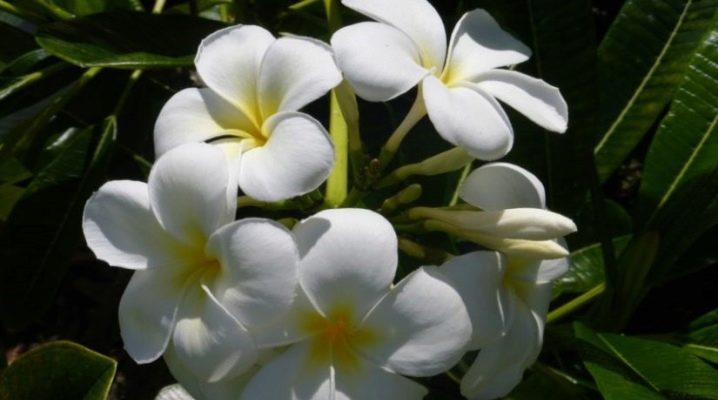
Stefanotis is a beautiful liana-like plant from the tropics, which belongs to the Lasovnevye family. The closest relative is the hoya, although they differ in many ways. For its wonderful aroma, the plant is also called Madagascar jasmine. In its natural environment, it grows in eastern Asia, the Malay Archipelago and Madagascar.

Description
Stephanotis belongs to the perennial evergreen vines. In nature, it can grow up to six meters, preference is given to semi-shady forests. Young stems have firmness and elasticity, and then become lignified. The leaf plates are leathery, with a shiny surface of a rich emerald hue. In shape, they are similar to an elongated, pointed ellipse with a prominent vein in the middle. They join the stem alternately with the help of elongated petioles.
Flowers are the main feature of Stephanotis. They are represented by a small tubular shape with five slightly curved petals, resembling a star. By their structure, flowers are waxy, dense, formed in the leaf sinuses. Umbrella inflorescence is formed from about 5-7 flowers of white, cream or purple color.
This tropical miracle can bloom naturally for ten months. The fruits of the plant in their appearance resemble oval boxes with parachute seeds. When the fruit is ripe, they spread easily in different directions.
Because of its beauty and snow-white color, stephanotis is increasingly included in wedding bouquets.

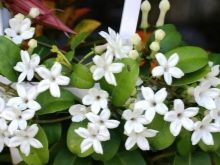
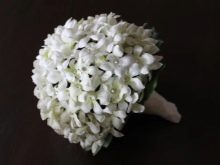
Views
In nature, there are 16 varieties of this plant, but they are suitable for cultivation. Not all.
- Stefanotis floribunda or profuse flowering - only one species that can be grown at home. Specimens of this variety grow up to five meters. The bud is snow-white, jasmine-shaped, although there are specimens with a cream color. One peduncle can have up to seven small, star-shaped flowers. The leaves are quite large, painted in a dark green tint.

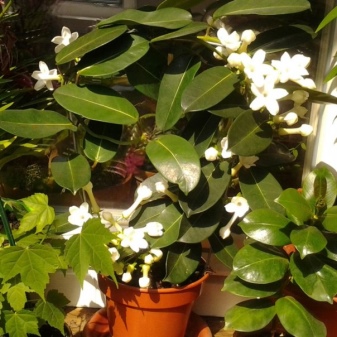
- Variegated Stephanotis belongs to the varieties of the previous type. This variegated subspecies of Madagascar jasmine attracts attention with the unusual color of the leaf plates. White, light green and yellowish stripes and dots densely cover the entire base. Only the ends of the leaves are slightly smoothed.
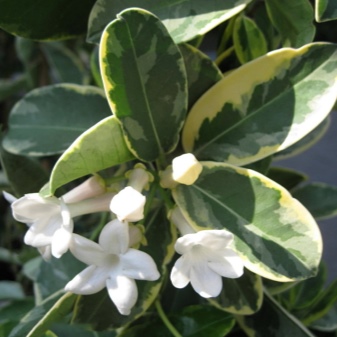
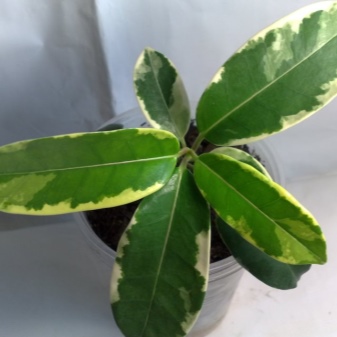
- Akuminata differs in cream color of flowers.
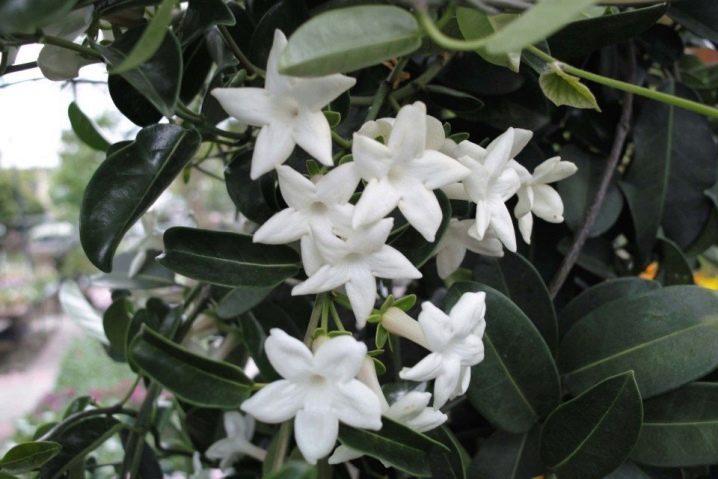
- Grandiflora has a rather large inflorescence, which can consist of thirty buds.
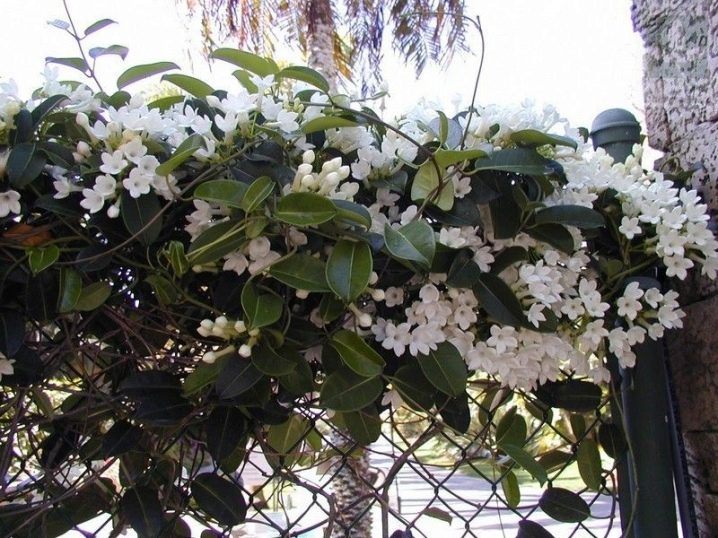
- Stephanotis Thorsii characterized by unusual flowers of a pale lilac tone.
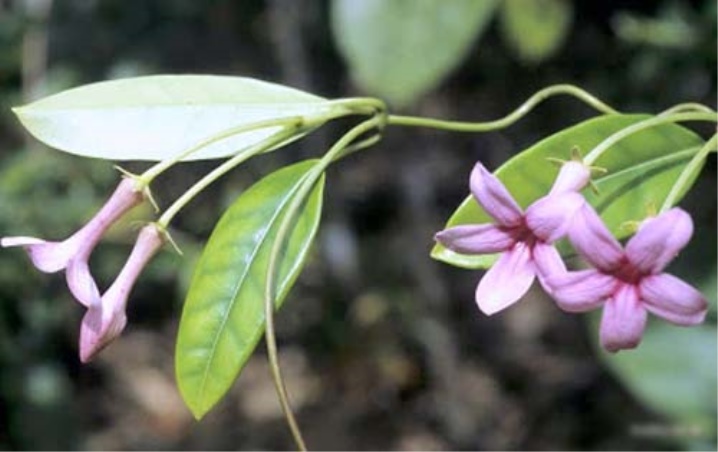
Breeding rules
The plant is bred in two ways.
Cuttings
It is better to propagate a flower by cuttings in spring or summer. This breeding option allows you to preserve the varietal characteristics of the plant. Most often, cuttings are cut when the plant is pruned. The shoots are taken half lignified with several leaves, cut 2 cm below the node. Since the sprouts of Stephanotis root poorly, they are treated with rooting stimulants, for example, "Kornevin".
They are placed at a slight slope in a container with wet sand, deepening by 1.5 cm. A cover is made of polyethylene or glass from above and placed under good lighting. The temperature is kept at +25 degrees, not forgetting to water. After about 2-3 weeks, roots and new leaves appear. The sprouts dive into small pots, the temperature can be lowered by +18 degrees, but at night it can be +14 degrees. As the plants grow, they are transplanted by transferring them into larger containers.
Cuttings can be rooted in water, they also successfully form roots.

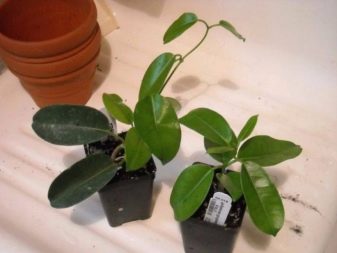
Seeds
It is rather difficult to propagate Stefanotis by seeds; this option does not always give a positive result. But if you put in a little work and be patient, you can try. It is worth following the following steps:
- the sowing container must be sterilized;
- pour prepared soil into it from equal proportions of peat and sand, moisten well;
- seeds soaked in water for two days are slightly pressed into the substrate, do not sprinkle;
- the container is covered with film or glass and placed in a lighted place with a temperature within +26 degrees;
- regularly ventilated and sprayed from a spray bottle;
- the resulting condensate must be removed;
- after about two months, seedlings germinate, after the formation of the first leaves they dive into small pots with a substrate for adult plants.
2-3 cuttings or seedlings are planted in a container at once. As they grow, they are pruned a little. When the plant grows to half a meter, it is shortened by about a third to form side shoots.
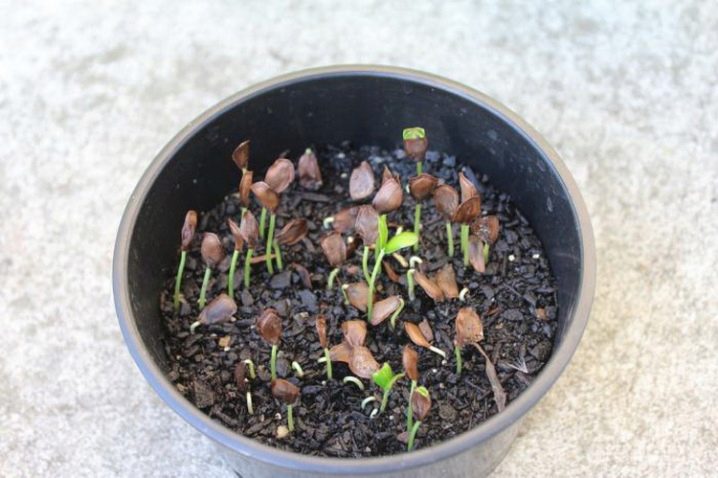
How to transplant?
Stefanotis grows quite quickly, so young specimens can be transplanted once a year, if necessary, twice. It is enough for a mature plant to transplant once every 2-3 years, sometimes you can only replace the topsoil by adding fresh soil. The main sign that a flower needs a transplant is the container from which it has already grown. You can find out by the protruding roots from the drainage holes or by the substrate that dries out too often.
This procedure is carried out in February or March (before the onset of the growing season) by transshipment, that is, together with an earthen lump.
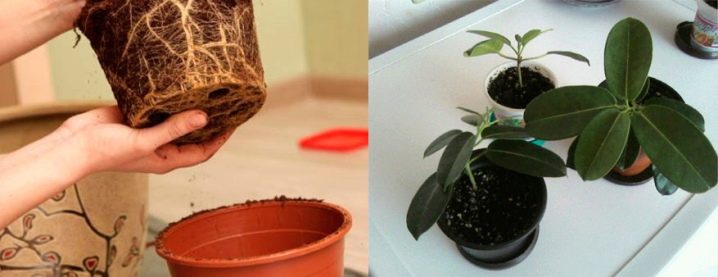
Choose a pot slightly larger than the root system of the plant. A tight container stimulates flowering, in a large pot the flower will develop poorly and will stop producing buds. It is better to choose a ceramic flowerpot, heavy so that it cannot turn over. Drainage must necessarily go to the bottom, about 3 cm. The soil is suitable for exotic plants, heavy, slightly acidic. It can be purchased ready-made, or you can cook it yourself. To do this, you need to mix the following components:
- three parts of peat with humus;
- two pieces of sand;
- one piece of deciduous land;
- one part of clay-sod soil.
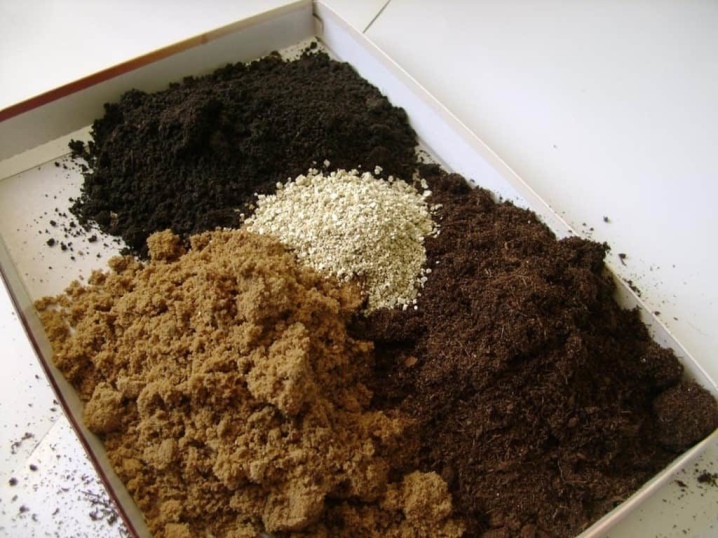
The prepared substrate must be disinfected. The transplant is performed as follows:
- drainage is placed on the bottom of the pot, then part of the soil mixture;
- carefully distribute the plant along with an earthen clod so as not to injure the roots;
- add soil around the edges and on top, moisten;
- the remains of water from the pallet must be removed;
- if the roots are damaged during transplantation, a drug must be added to the irrigation liquid to stimulate root growth.
Only a plant that does not bloom is transplanted. After purchase, the flower must be transplanted. If you bought Stephanotis with buds, you need to wait until the flowering ends, only then change the pot and soil.
It is worth knowing that a tropical plant is a purely indoor flower, so it makes no sense to plant it in the garden, it will not survive in the open field.
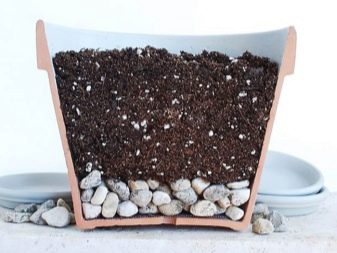
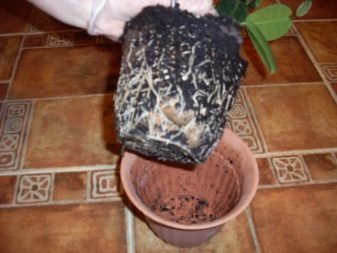
Care features
Madagascar jasmine is considered a finicky flower, but having created certain conditions for it, you can achieve that it will look beautiful and bloom for a long time.
- Lighting it is necessary to organize abundant, but it is not necessary to allow the soil and the flower itself to overheat, to exclude direct sunlight on the plant. During short light days, additional lighting is organized for it, which contributes to the abundant blooming of the bottles with the next flowering.
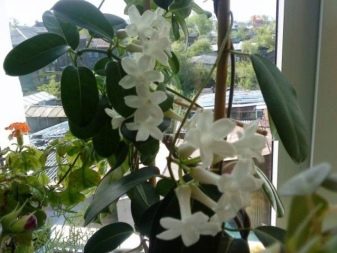

- Temperature an ordinary, indoor plant is suitable for the plant, in this regard, Stephanotis does not impose special requirements. In winter, it normally tolerates a decrease to +15 degrees, but a big difference should not be allowed in either direction.
Sharp fluctuations, like drafts, become a serious danger to the plant, up to its death. Because of this, the flower is not exhibited outside if the difference between night and day temperatures is significant.
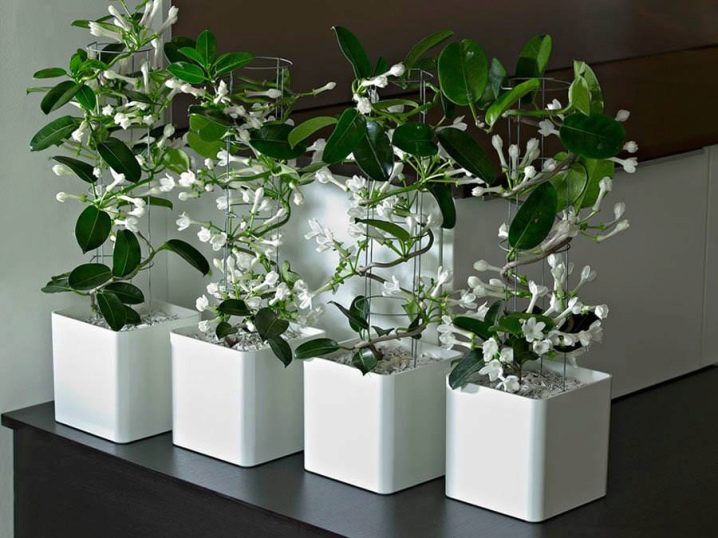
- Watering organize plentiful but infrequent. The soil should dry out between waterings, however, it should not be allowed to dry out. The water is used soft, settled and not cold.
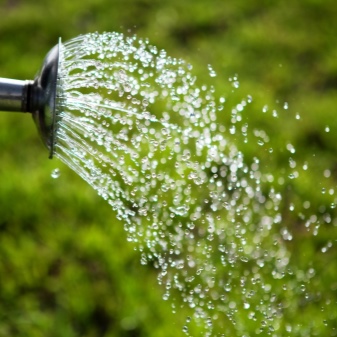
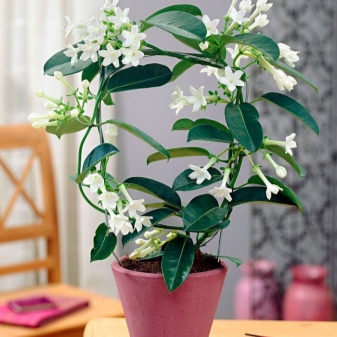
- Air humidity you need high, so you need to maintain it. This applies to winter time, when heating devices that dry the air are working. During this time, the plant is regularly watered or bathed in a warm shower if the temperature is not lowered.
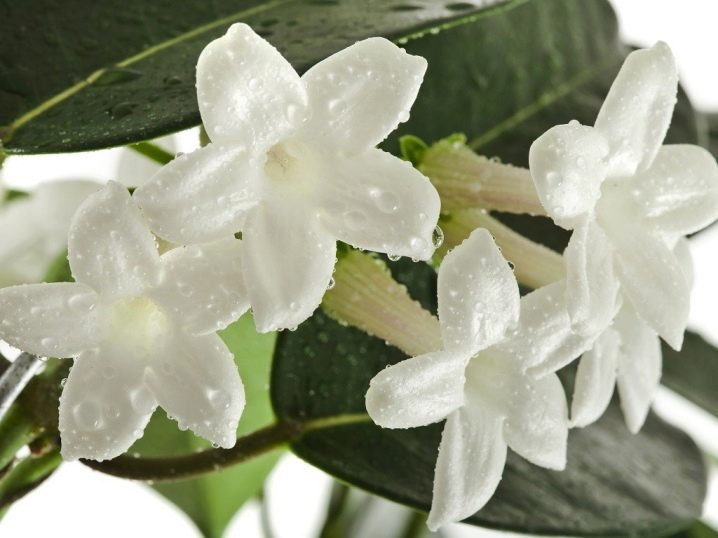
- Fertilizers may not be used if Stephanotis is frequently transplanted. Top dressing is usually applied when the growing season begins. For this, fertilizers are used, which include phosphorus, which activates the formation of buds, and there is a low nitrogen content. Ready-made fertilizers for flowering plants have proven themselves well.
It is recommended to apply top dressing 2 hours after the plant has been moistened. You can alternate mineral fertilizing and organic matter. In the second half of summer, fertilization is stopped.

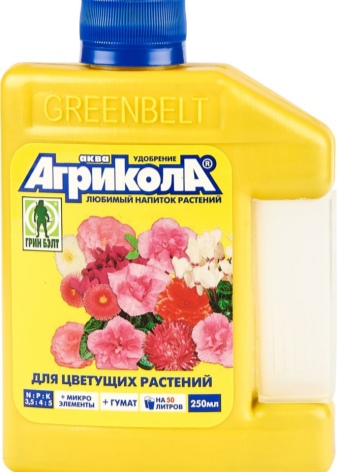
- Pruning Plants are held every spring as flowers form exclusively on young shoots. Stephanotis tolerates this procedure without any problems. To activate the formation of new lateral processes, it is necessary to properly cut the flower: old, leafless stems and wilted flowers are removed, too long shoots are shortened. In the summer, pinching of the shoots is carried out in order to continue the flowering period.
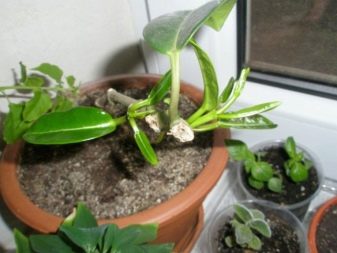

- Support the flower is necessary, since it is a fast-growing vine and does not have upright shoots. It must be installed while the plant is young, in order to give the stems the right direction, mature shoots become hard and difficult to correct.
The most common type of support for stephanotis is an arch support. A simple ladder works well too.
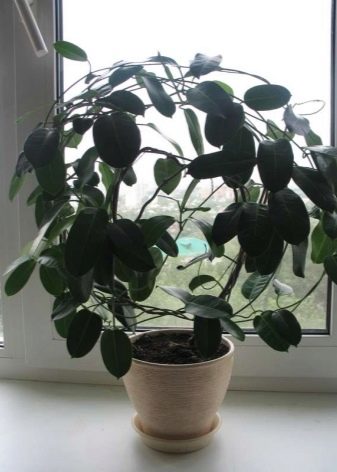

- Move the plant or even you cannot move the flowerpot during the formation of buds and flowering, otherwise the plant will drop flowers.
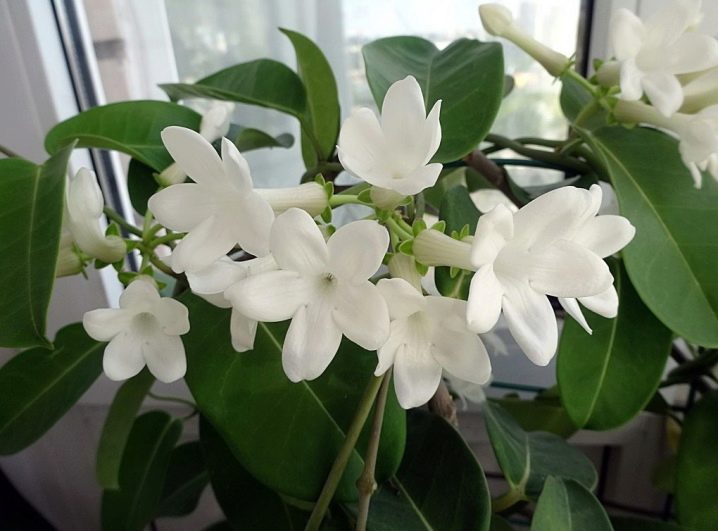
- Dormant period begins at the end of November, then watering is significantly reduced and feeding is stopped.
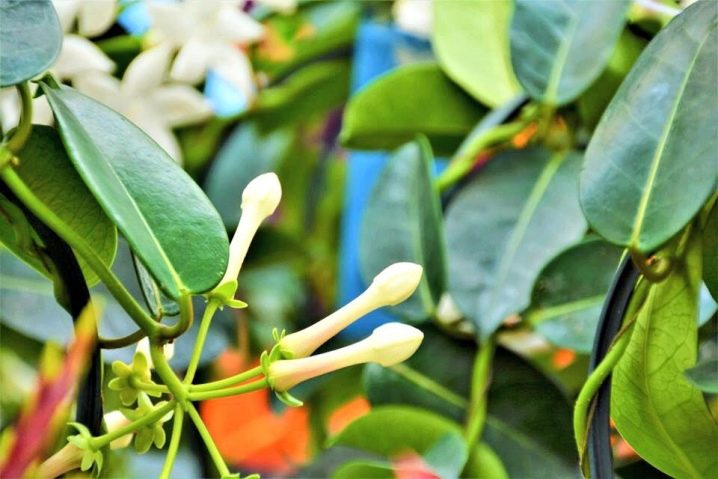
- Wintering occurs at + 14- + 16 degrees. Such temperature conditions have a good effect on the number of buds in future flowering. It is necessary to create additional light, since the plant needs at least 12 hours of daylight hours. Stefanotis can overwinter at normal room temperature, but then you need to spray it or organize wet wipes. Under such circumstances, the upcoming flowering may be scarce.
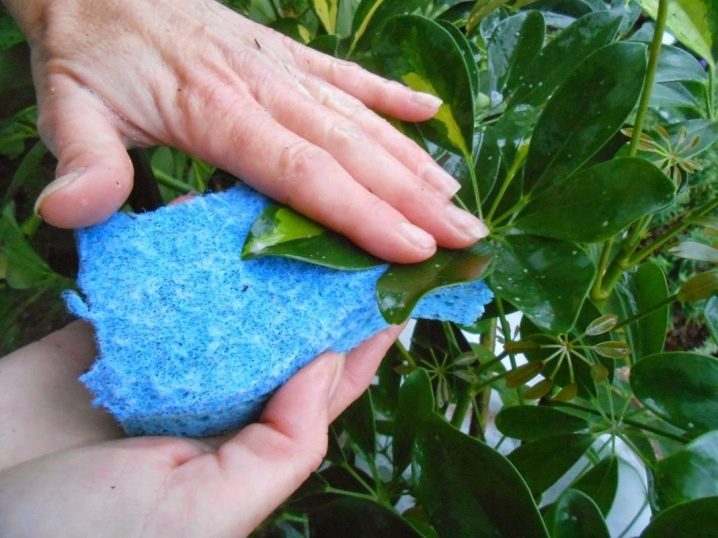
Since Stephanotis is not yet very popular among indoor plants and has been little studied by flower growers, it is somewhat difficult to care for it, but the efforts are worth it. The plant will thank for the work with a beautiful flowering view.
It must be remembered that the flower is poisonous, therefore, precautions must be taken, especially if there are small children or animals.

How to make it bloom?
When grown indoors, Madagascar jasmine begins to bloom in early summer and can last up to four months. Mature specimens bloom, which are 3-4 years old. In order for Stephanotis to form buds, you must adhere to the following rules:
- transplant on time;
- avoid sudden changes in temperature and the formation of drafts;
- in winter, the plant needs a cool environment with a temperature of +15 degrees;
- carefully apply fertilizers, especially those containing nitrogen, when forming buds;
- organize a well-lit location;
- do not move the pot with the plant when budding and flowering occurs.
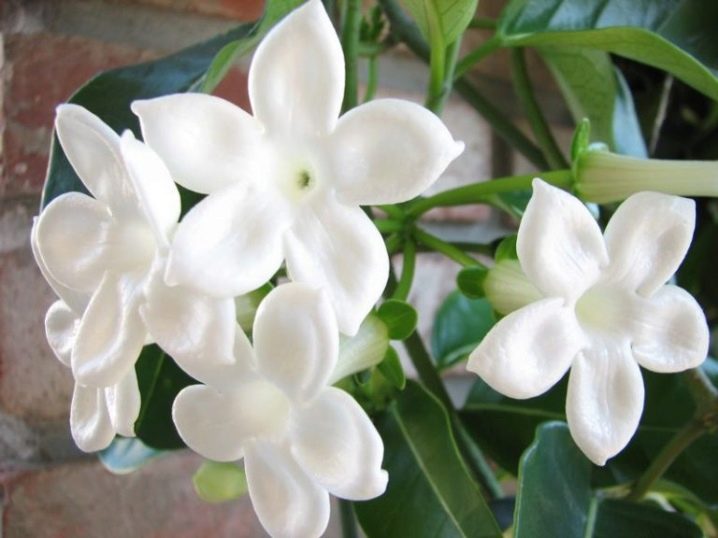
Possible diseases, their prevention and treatment
A tropical flower in an unusual climate is susceptible to various diseases, the causes of which most often errors of care are.
- If the roots begin to rot and part of the shoots at the base, the cause is often waterlogging of the soil. If you do nothing, the flower will die. In the early stages of the disease, the plant must be transplanted into a new substrate, removing all damaged parts, and treated with fungicides. In the later stages, Stephanotis does not respond to treatment, it is destroyed. To protect the flower, it is necessary to adhere to the humidification regime, to prevent temperature changes and drafts.
- Powdery mildew manifests itself as a whitish bloom on leaf plates. She very quickly captures leaf by leaf, which is why they turn yellow and dry, and the flower dies. In order to combat, diseased leaves are removed, and the plant is sprayed with fungicidal preparations according to the instructions. If the affected areas are small, a light manganese solution (2.5 g per 10 l of water) is used, which is sprayed on the flower every five days. The procedure must be carried out 2-3 times. To prevent the onset of the disease, regulate watering, move Stephanotis to a bright place.
- Yellowing leaves occurs due to watering with hard water or lack of lighting. Fertilizer deficiency can be expressed this way. To correct the problems, it is necessary to correct the care of the flower.
- If Stephanotis dropped the leaves in winter - this is normal for a flower, new ones will appear in the spring. If foliage falls, the flower lets you know that it is frozen and you need to adjust the temperature.
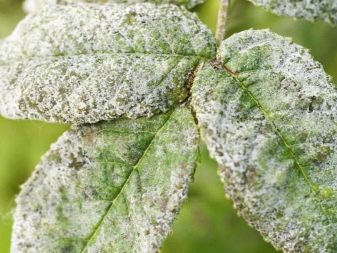
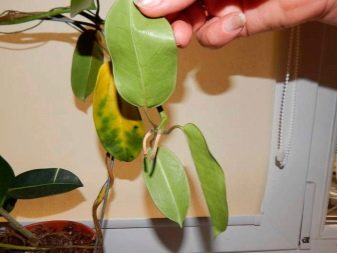
Madagascar jasmine is a magnificent plant that will decorate any room with its appearance, and its delicate aroma will create a pleasant atmosphere in the house.
For the features of caring for stephanotis, see the following video.























The comment was sent successfully.